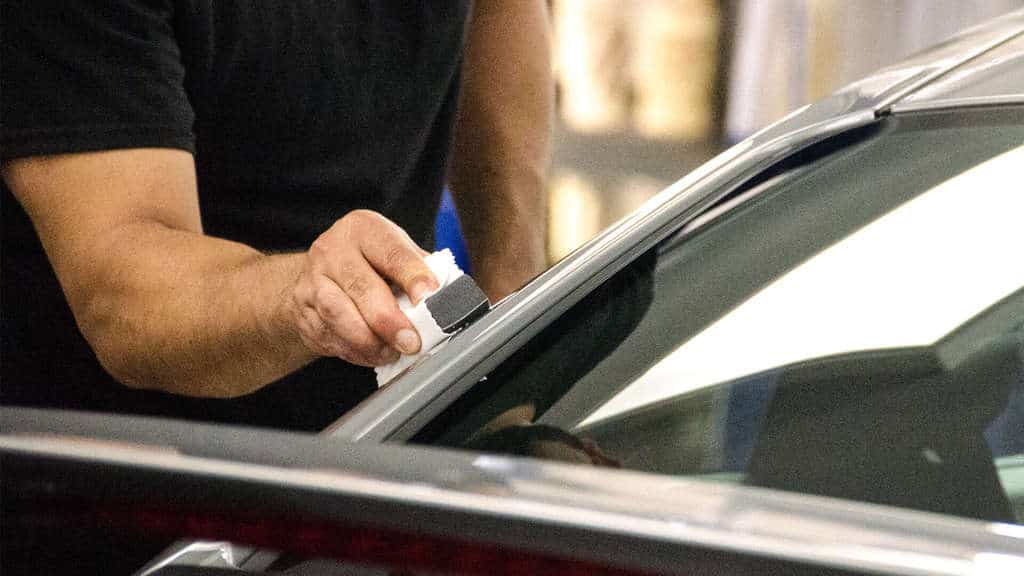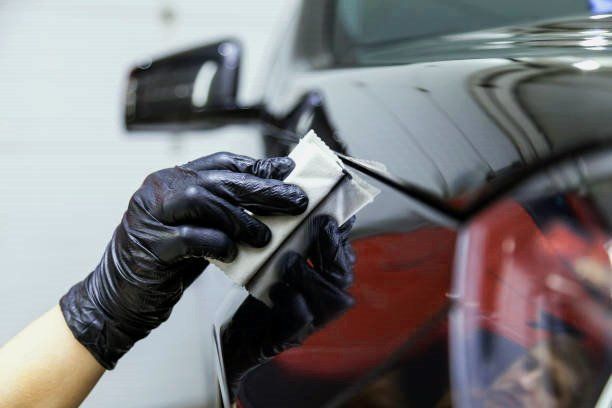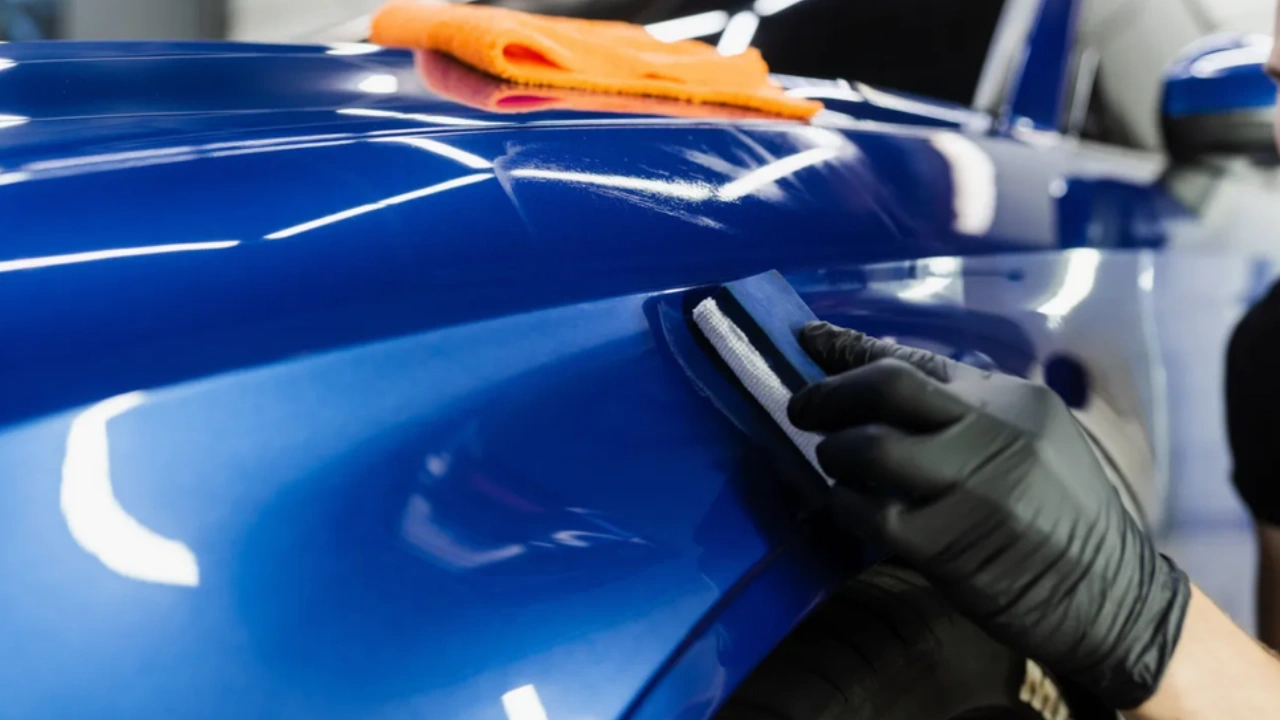Ceramic Coating: A Detailed Service for Car Paint Protection
Ceramic Coating: A Detailed Service for Car Paint Protection
Blog Article
The Duty of Ceramic Layer in Securing Your Automobile's Paint From Environmental Damages
Ceramic finish has actually arised as an innovative service for vehicle owners seeking to preserve the stability of their lorry's exterior. As we check out the subtleties of ceramic covering, it comes to be evident that the choice to implement this protective step can considerably affect your car's durability and aesthetic.
What Is Ceramic Layer?
Ceramic finishing is an innovative liquid polymer put on the outside surface areas of a car, designed to offer a resilient layer of defense for the paint. This cutting-edge remedy creates a chemical bond with the lorry's factory paint, producing a hydrophobic and resilient shield. The finish is composed of nanoparticles that fill out the microscopic imperfections in the paint, causing a smooth surface that boosts gloss and beam.
Generally, ceramic coatings are available in different formulas, enabling different degrees of security and durability. While some products can last for a number of months, others offer security for several years, depending on the thickness of the application and environmental variables. The application procedure needs precise prep work, including washing, decontaminating, and brightening the automobile's surface to make certain optimal attachment of the finish.

Advantages of Ceramic Layer
Among the key benefits of applying a ceramic covering is the phenomenal security it uses to auto paint. This sophisticated coating creates a resilient layer that shields the automobile's surface area from a range of ecological threats, including UV rays, acid rainfall, bird droppings, and tree sap. By providing this robust defense, ceramic coverings substantially decrease the risk of fading and etching, preserving the auto's aesthetic appeal in time.
Along with protection, ceramic finishes are renowned for their hydrophobic residential or commercial properties, which drive away water and dust, making it simpler to keep a tidy vehicle. This self-cleaning effect lowers the frequency of washing, saving both time and resources. Moreover, ceramic finishes enhance the deepness of the paint's gloss, leading to a vivid and sleek appearance that boosts the overall appearance of the car.
One more significant benefit is the long life of ceramic finishes. Unlike conventional waxes or sealants that need regular reapplication, ceramic finishings can last a number of years, supplying an affordable option for car owners seeking long-term protection. In general, spending in ceramic finish results in improved resilience, decreased upkeep, and continual aesthetic charm for vehicle paint.
Exactly How Ceramic Coating Functions
A ceramic coating runs via a chemical bonding procedure that develops a protective layer on the lorry's paint surface area. This ingenious solution utilizes advanced nanotechnology, where tiny bits of silica are suspended in a fluid form - ceramic coating. Upon application, these fragments bond with the manufacturing facility paint, developing a hydrophobic and long lasting layer that enhances the lorry's surface
The main component of ceramic layers, silicon dioxide (SiO2), adds to the layer's stamina and durability. When treated, the coating changes right into a tough, glass-like finish that shields the paint from ecological contaminants such as dust, UV rays, bird droppings, and tree sap. This molecular bond results in a surface area that is not only immune more to scratches however likewise less complicated to clean up, as dust and gunk are much less most likely to stick.
Furthermore, the hydrophobic homes of ceramic layers trigger water to bead and slide off, lowering the possibilities of water places and natural resource. This safety obstacle successfully prolongs the life of the paint and preserves the vehicle's aesthetic allure, supplying vehicle owners a resilient solution for paint defense.
Application Refine of Ceramic Finishing
When thinking about the application of ceramic covering, preparation is crucial to attaining ideal results. Any type of blemishes or scrapes need to be resolved at this phase, as the covering will bond with the surface beneath.

Ceramic layer is after that used in little sections, usually using an applicator pad. It is crucial to operate in also strokes, making certain consistent coverage. The covering should be allowed to treat for a defined time, which can differ depending on the item used. After the preliminary application, a high-quality microfiber towel is used to buff the surface area, enhancing gloss and ensuring a smooth surface. Finally, the automobile should be delegated heal in a controlled setting to enable the covering to completely bond with the paint.
Long-Term Upkeep and Treatment
Achieving a successful ceramic layer application establishes the foundation for long-term defense, yet correct upkeep is important to preserving its advantages. click over here Normal washing is essential; using a pH-neutral automobile hair shampoo will assist keep the layer's integrity without causing damage. Avoid automated car cleans that use rough products, as they can compromise the finishing's surface area.

Furthermore, using a ceramic finish upkeep spray can improve the existing layer, giving an additional boost in security and luster. It's suggested to perform this every 3 to 6 months, depending upon environmental direct exposure.
Finally, parking in shaded locations or making use of vehicle covers can avoid prolonged direct exposure to hazardous UV rays and environmental contaminants, further extending the life of your ceramic coating. By sticking to these upkeep practices, you can ensure your automobile's finish continues to be safeguarded and aesthetically appealing for several years to find.
Conclusion
In recap, ceramic finishing works as an important protective action for auto paint, effectively shielding automobiles from a series of ecological risks. Its capability to produce a durable hydrophobic obstacle not only enhances aesthetic allure however also considerably decreases the frequency and strength of upkeep needed. The resilient nature of this innovative polymer underscores its worth in preserving lorry honesty and look, ultimately contributing to a much more resilient and aesthetically enticing automobile finish.
Ceramic layer is an advanced fluid polymer applied to the external surface areas of an automobile, made to offer additional hints a long lasting layer of defense for the paint. Ceramic coatings boost the depth of the paint's gloss, resulting in a polished and vibrant look that raises the overall look of the car.
A ceramic finishing runs through a chemical bonding procedure that produces a safety layer on the lorry's paint surface area.The primary component of ceramic coatings, silicon dioxide (SiO2), adds to the finish's strength and durability.In recap, ceramic layer offers as a vital protective measure for automotive paint, effectively shielding lorries from an array of ecological risks.
Report this page